|
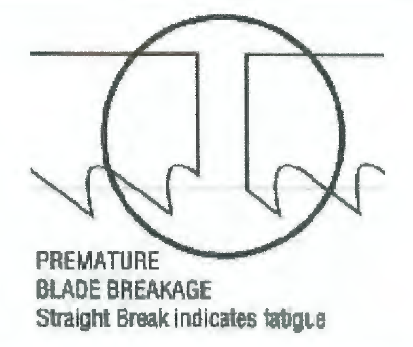
|
• Incorrect Blade
• Band tension too high
• Excessive feed
• Incorrect cutting fluid
• Wheel diameter too small for blade width
• Worn or chipped pressure block
• Blade rubbing on wheel flange
• Teeth in contact with work before starting sawing
• Side guides too tight |
• Check tooth selection
• Reduce band tension, refer to operators manual
• Reduce feed pressure
• Check coolant recommendations
• Use narrower blade
• Replace worn pressure blocks
• Adjust wheel alignment
• Allow blade clearance above work
• Refer to operators manual |
|
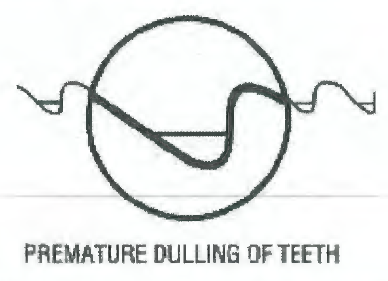
|
• Blade on machine backwards
• Improper blade break-in procedure
• Hard material or heavy surface scale
• Material is work hardening
• Improper cutting fluid or mix ratio
• Speed or feed too high |
• Install blade correctly
• Refer to recommended procedures
• Check material hardness and surface condition
• Increase feed pressure
• Follow coolant mixing procedures
• Check cutting recommendations |
|
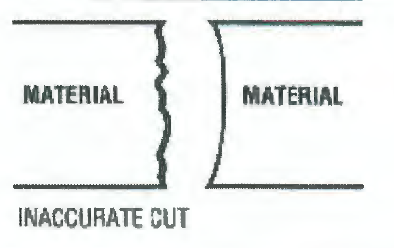
|
• Guide arms too far apart
• Blade worn out
• Over or under feeding
• Improper tooth pitch
• Curing fluid not applied properly
• Too many teeth for material cross-section
• Guides worn or loose |
• Adjust guide arms closer to material
• Replace blade
• Check cutting recommendations
• Use proper tooth selection
• Adjust coolant nozzles
• Use proper tooth selection
• Tighten or replace guides |
|
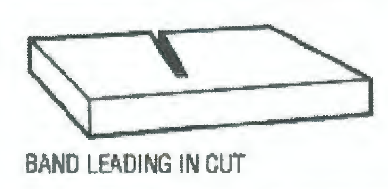
|
• Over feeding
• Low band tension
• Tooth set damaged
• Guide arms loose or space too wide |
• Check cutting recommendations
• Refer to operators manual
• Check material hardness
• Adjust guides and guide anns |
|
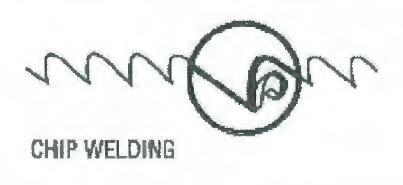
|
• Worn or missing chip brush
• Improper or lack of cutting fluid
• Wrong coolant ratio
• Excessive feed or speed
• Incorrect blade pitch |
• Replace or adjust chip brush
• Check coolant flow and fluid type
• Check coolant type and ratio
• Reduce feed or speed
• Use proper tooth selection |
|
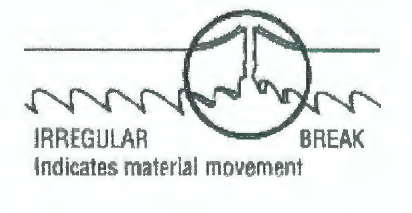
|
• Indexing while blade in work
• Blade not high enough before index
• Saw head drifts into work while neutral |
• Adjust index sequence
• Adjust height selector
• Check hydraulic cylinder |
|
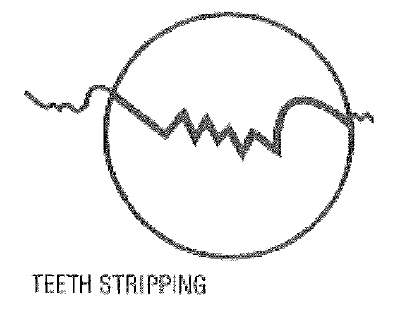
|
• Improper blade break-in procedure
• Speed too slow
• Feed pressure to high
• Tooth jammed in cut
• Poor cutting fluid application or ratio
• Hard material or heavy scale
• Wrong blade pitch
• Work spinning or loose nested bundles
• Blade on backwards |
• Follow proper break-in procedure
• Refer to cutting recommendations
• Reduce feed pressure
• Do not enter new blade in that cut
• Adjust coolant flow and ration
• Check material or surface hardness
• Use proper tooth selection
• Tighten vises or use nesting clamps
• Install blade correctly |
|
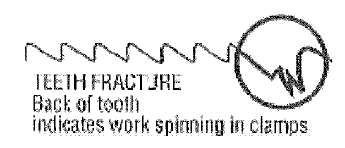
|
• Saw guides not properly adjusted
• Incorrect feed or speed
• lncorrect blade
• Material moved in vise |
• Align or adjust saw guides
• Refer to cutting recommendations
• Use proper blade type and pitch
• Inspect and adjust vises |
|
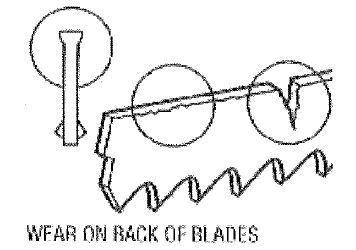
|
• Excessive back-up guide preload
• Low blade tension
• lncorrect blade (carbon steel type)
• Excessive feed rate or pressure
• Damaged or worn pressure block
• Guide arms spaced too far apart
• Blade rubbing band wheel flanges |
• Adjust pressure blocks
• Refer to operators manual
• Switch to a Bimetal blade
• Reduce feed rate or pressure
• Replace pressure block
• Adjust guide arms closer to work
• Adjust wheel alignment |
|
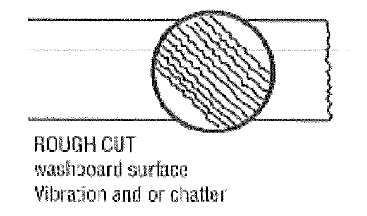
|
• Dull or damaged blade
• lncorrect feed or speed
• Blade not supported properly
• Low blade tension
• lncorrect tooth pitch
• Guide arms too far apart |
• Install new blade
• Refer to cutting recommendations
• Adjust or tighten guide arms
• Refer to operators manual
• Use proper tooth selection
• Adjust guide arms closer to material |
|
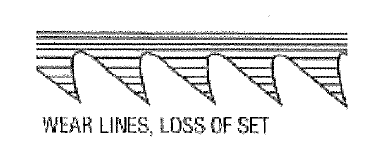
|
• Saw side guides too tight
• Blade riding too high in guide
• Blade teeth riding on band wheel surface
• Wrong blade width for machine
• Chips be carried back into cut
• Worn or damaged pressure block
• Insufficient coolant flow |
• Adjust guides properly
• Adjust rollers or pressure blocks
• Adjust tracking or replace wheel
• Refer to operators manual
• Replace or adjust chip brush
• Replace pressure block
• Adjust coolant flow |
|
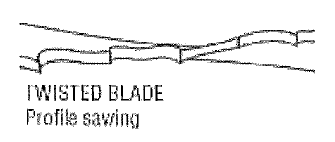
|
• Blade binding in cut
• Side guides are too tight
• Work loose in vise
• Feed to heavy
• Guide arms too far apart |
• Adjust feed or use heavy set blades
• Adjust guides
• Adjust vises
• Reduce feed pressure
• Adjust guide arms closer to material |
|
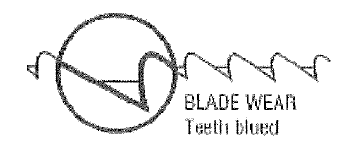
|
• Incorrect blade
• Heavy feed or too fast speed Lack of cutting fluid
• Blade installed backwards |
• Use proper tooth selection
• Refer to cutting recommendations
• Adjust coolant flow or ratio
• Install blade correctly |
|
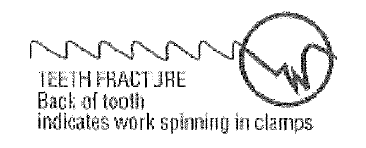
|
• Material loose in vise
• Incorrect tooth pitch
• Feed too fast
• Speed too fast |
• Adjust vises
• Use proper tooth selection
• Reduce feed rate
• Refer to cutting recommendations |